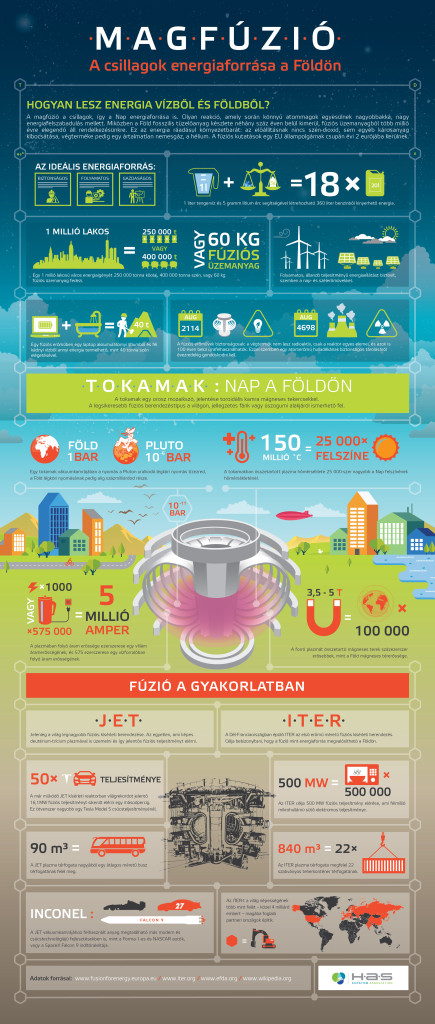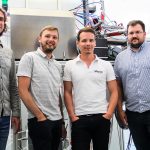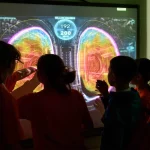Did you know that the amount of energy which can be extracted with fusion from the water in a 50 meter long Olympic size pool like Duna Aréna‘s could serve the energy needs of a Budapest size city for more than 4 years?
And the fact that more than half of the world’s population are building the first power plant size fusion experimental reactor?
No? Don’t worry, there are some more, interesting comparisons for fusion energy on our downloadable infographic.

Fusion infographic, source:: Wigner fusion, magfuzio.hu
Okay but how does fusion work?
Fusion is a nuclear reaction in which two light nuclei fuse, the closest natural fusion power plant is the Sun. The Sun creates huge amount of energy with fusion, which energy feeds the life on Earth. When we look at the sky at night, we can see thousands of fusion reactors, because all of the stars in the Universe are powered by fusion. Despite of the numerous working examples and the research, ongoing for decades, a fusion power plant with positive energy balance is still to be implemented. In practice we wanted to bring down the Sun to Earth which is not an easy task but it offers a safe, inexhaustible and environmentally friendly energy source.
The types of fusion reactions those dominate Suns energy production is different from that can be utilized economically on Earth. In the Sun there are two parallel energy production cycle which produces fusion energy. One is the proton-proton cycle (PP) and the other one is the Carbon-Nitrogen-Oxygen cycle (CNO). On Earth the easiest way to create fusion is to fuse two hydrogen isotopes, called Deuterium and Tritium, and the end products are a helium nuclei and a neutron.
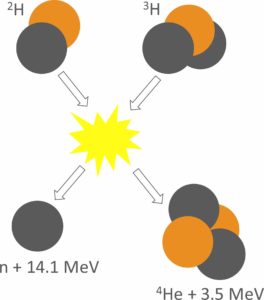
D-T reaction, Source:: EUROfusion, Reinald Fenke
Deuterium can be extracted from seawater because every 5000th water molecule contains a Deuterium instead of Hydrogen. Contrarily, tritium can only be found in traces, and it has to be produced or bred in term accordingly. This can be done by the fusion reaction produced neutron which hits a Lithium nucleus and creates Helium and Tritium. A fusion power plant would produce fuel for itself this way from Lithium which can be extracted from seawater and many type of volcanic rocks.
The difficulties of achieving fusion are due to the very high temperature, 100 million degrees Celsius – 10 times hotter than the core of the Sun – at which the D-T fusion reaction takes place most likely. At such a high temperature the matter ionizes, which means that the electrons separate from the nuclei. This is the so called plasma state or the fourth state of matter. Under terrestrial conditions high temperature plasma can be confined with very strong magnetic fields to prevent touching the device wall. About 40 magnetic confinement experimental devices operate around the world at the moment.
What is the next step?
Countries including more than half of the world population have joined to create ITER, one of the biggest research project on Earth. The members are China, the EU, India, Japan, South-Korea, Russia, the USA.
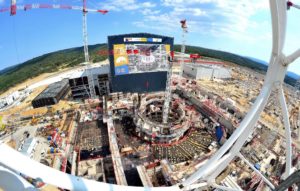
ITER worksite in June 2017, Source: ITER Organization
ITER is also a magnetic confinement experimental device, its construction is a keystone in fusion research since numerous physics processes and technological solution will be able to be tested in ITER for the first time.
Among others ITER aims to produce 500MW fusion power with 50MW of heating power, with this achievement it will demonstrate that fusion is a feasible way of energy production on Earth. Tritium breeding techniques will also be tested here for the first time. This experiment will establish the concept of the first fusion power plant which will produce energy to the grid.
As a member of the European Union’s Fusion Research Programme, Wigner Research Centre for Physics and the Budapest University of Technology and Economics are contributing in ITER project. More than 10 Hungarian physicists and engineers involved in this huge project which is being built in South-France.
